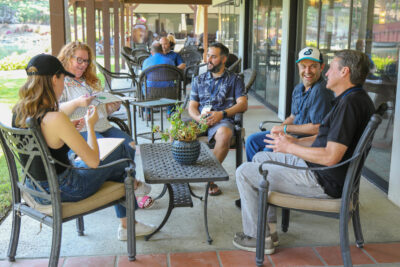
10 Ways to Cast a Generosity Vision Statement in Your Church
Use this list of ten tips for casting a generosity vision in your church to improve member engagement, and ultimately leading to increased giving.
Long gone are the days when folks gave to the church simply because that was the expectation. Dollars are often tight. Members have sometimes seen church dollars spent poorly. Young people generally want to support hands-on, personal ministry. Members are still willing to give, but they want to give to something that matters. They need a vision. A challenge. A purpose.
Here are some effective ways to cast a “generosity vision” in a church:
1. Tell the gospel story
This first point might seem obvious, but make sure you understand my intention: rightly and clearly taught, the gospel story is a story of generosity. It’s the story of God’s gift of His Son to people who would kill Him. It’s God’s offering of grace to folks like us, who don’t come close to deserving it.
2. Teach the story of the early church
The early believers opened their homes to one another and willingly shared all they had (Acts 2:44). They sacrificed so that none of them would be in need (Acts 4:32-35). That’s nothing less than voluntary generosity—and that infant church remains a model for us.
3. Plan annual stewardship teaching
Giving generously is not simply a matter of giving more; it’s learning to give sacrificially through good budgeting, wise spending, prayerful giving, and obedient living. Strong, effective, regular stewardship teaching lays the foundation on which you can challenge your members to give more generously.
4. Share testimonies of changed lives
I trust there are believers in your congregation whom God has dramatically and graciously changed. Others have seen God come through for them in unexpected and powerful ways. Still others have simply experienced God’s faithfulness through the decades. Here’s the problem: in most churches, even the regular attendees don’t know these stories. Your folks will give more generously if they know God is moving among them.
5. Introduce your church to the demographics of and needs within your community
As a church consultant, I work with church leaders from all over the country. Many, I find, have little knowledge of the community around them. Do some homework so that you can inform your church about local needs. What ethnic groups are in the area? How many single-parent households are there? What percentage lives in poverty, if any? How many are under the age of 18? Help your folks to see the needs if you want them to be generous.
6. Intentionally and strategically prayer-walk (or even prayer drive) your community
In many cases, even people who live in a community are unaware of the needs around them. Take a map of your community, allot sections for each prayer team, and send them out to see the community with fresh eyes. Train them to see needs they may never have noticed before, and teach them to pray over those needs. One other thought: if you choose to do prayer driving rather than prayer-walking, make sure the driver is comfortable praying with his eyes open!
7. Ask community and local school leaders, “What can our congregation do to help this community?”
Even a single conversation with government officials or local school leaders is likely to introduce you to a longer list of needs than your church can handle. For example, school officials might talk about needs for teaching aides, after-school tutors, faculty support, or building repair. Find out what the needs are, and then get your church involved. Challenge them to give generously of their time and money for these specific causes.
8. Connect your church with missionaries in North America and around the world
This initiative will take some work, but the reward can be huge. Make the effort to meet someone serving in North America (e.g., a church planter in an unchurched area, a missionary among the poor in an urban setting, etc.). Connect with an international missionary serving in one of the dark regions of the world. Use technology (for instance, video-conferencing) to introduce your church to their ministries and their needs. Develop strategic partnerships with folks who want to help drive back the darkness, and your church will be more willing to give generously.
9. As a leader, take a mission trip and then tell the story
Go where the gospel is still unknown, and meet people who are giving their lives there to tell about Jesus. Your life will never be quite the same after you’ve seen the darkness up front. I’ve often seen that as leaders begin to get a vision for reaching other nations and people groups, they are much more inclined to challenge their people to give sacrificially.
10. Challenge your church to give at least a tithe on one particular Sunday
This strategy, known as a “Prove the Tithe Day,” is not new, but it still works. Cast your church vision statement widely, using any of the steps above, and then challenge all of your members to give at least a tithe for one Sunday. The goal is to push them to give in faith and to show them they can make the necessary sacrifices to give more to God.






